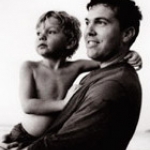
Mr. Graham Dunstan
Ask the Senate to Support Arts Education and National Service
Posted by Jul 24, 2009

Mr. Graham Dunstan




Last entry I told you how I got started. I set an unreasonable goal for myself (raise $50,000 in a year). I picked a Cause I believe in with my eyes closed - Arts Education for Grade Schools. I told everyone I knew and people I didn't know, what I was up to.
And then..?
Within two weeks I was invited by a High School classmate (who honestly, I think forgot who I was) to a Cause on Facebook that was exactly what I'd committed to. I'd been researching different organizations I could support, and this was just the one. I really couldn't believe it, but more importantly, I couldn't pass it up.
I joined, read everything I could, met people, and in a couple hours I arrived at the place I think most good hearted people end up a couple hours after they join a Cause.
Read More

What is art? Why is art important? In a city of countless museums and arts institutions, you would think Washingtonians especially would have these questions answered. But with access to so much information, examples and exceptions to the rules, the access to information makes these big questions even harder to answer. And because art is so variable and different people have access to different kinds of art, it is hard for anyone to truly be an expert.
When exposed to art, whether through a gallery or theater or concert hall, most people are under the impression that somebody else in the room "gets it" better than they do: that somebody else, or perhaps everyone else, experiences the painting or play or song with a higher level of understanding. Without concrete answers and with the potential opportunity embarrass him/herself, many people begin to show signs of fear.
Read More

With apologies for my late entry into the blog conversation due to snow in the Arctic where I am traveling, I want to share how we in Alaska have initiated a process to redesign how the Artist in the Schools program works in our far flung state. For thirty years artists, predominantly from the "lower 48", have enriched lives of students and teachers in Alaskan schools in one - three week residencies. At the same time there was little substantive evaluation of the impact of residencies aggregated in order to share with local communities and schools, Alaska Department of Education and Early Development or legislators.
A report published last January entitled "On Thin Ice: Status of Arts Education in Alaska" documented that of the responding districts (59% of the state's total, serving 89% of its students) 72% do not have any arts curriculum and 'access to the arts for all students remains a major challenge. Thousands of Alaskan students do not receive any formal arts education." Though some of the lack of access can be attributed to geography, the lack of roads, the high cost of fuel, the diversity of cultures and number of indigenous languages present in our state, teachers most frequently cite No Child Left Behind mandates, lack of time in the school day and lack of confidence as the major barriers. Administrators report lack of funds and trained teachers as major barriers.
Read More

A parent of a pre-k special needs student contacted me last year. She had taken a workshop led by one of our artists and really enjoyed it; she felt it could help her child learn to find her own creative voice, and feel successful at school. Her daughter, Cristina, attended classes at two pre-k centers that hosted visiting artists in the classroom. However, because she was special-needs designated, she missed both opportunities. How? At the first site, Cristina was pulled out of one class for one-on-one instruction time during the artists’ visit. At the second site, she was placed in a stand-alone class for special needs students. Unlike the other classes at her school, this class did not host a visiting artist.
For students with special needs, access to arts learning opportunities are often few and far between. Yet, special needs-designated students are often the most likely to benefit from arts learning. There is a lot of talk in the education world about “access and equity.”
Read More

Every Saturday morning, for the last several years, parents and their children gather around an art table at Sitar Arts Center in Washington, DC, poring over the images that they will cut and paste into beautiful collages while they enjoy quiet and meaningful time together.
Tim has taught the collage class since its inception, followed by a color-mixing class that produces artwork of breathtaking quality. He is an exceptional teacher and artist and he chooses to volunteer his time each week to share his gifts with families in our community.
Whenever I thank Tim, his gracious response is usually that his time at Sitar is the “best hour of his week.” I know that is because he derives great joy from working with our wonderful kids.
More than one hundred visual and performing artists volunteer their time each week at Sitar, teaching individual instrumental lessons and classes in music, dance, drama, digital arts, creative writing and visual arts. Together with the partnering arts organizations that I wrote about yesterday, these dedicated individuals make it possible for us to provide a total of 183 weekly classes and private lessons to 450 young people this semester.
Read More